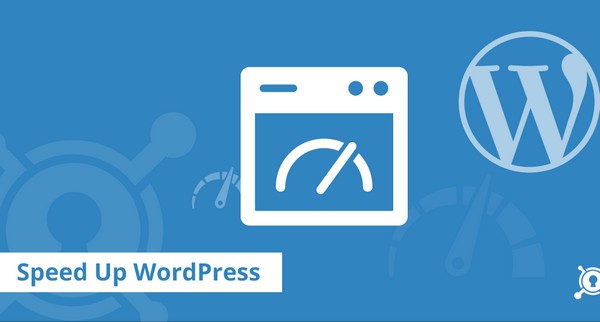Website speed is an important, yet often-overlooked aspect of web development. Sites that take longer than two seconds to load have a bounce rate 47% higher than sites that load under the golden two-second mark. Search engines like Google and Yahoo also rank websites with quicker loading times higher than those with longer wait times.

The bottom line: if you care about driving traffic to your site, you need to care about loading speeds. Users are an impatient bunch, and any delay in your site’s loading times will have an impact on your bottom line, be it sales, advertising revenue or affiliate marketing programs.
Here we explore four ways to make your WordPress-powered blog or website load faster. For more information on website providers, check out a list of the best blogging sites.
How Can I Test My Site’s Loading Time?
If you don’t know how long your site takes to load, you should first analyze your current loading times. While a site’s speed is not the same for each page, you can test your homepage to get a good idea of how quickly a site is functioning.
Webpagetest.org is a popular tool used by web developers in testing page speeds. GTmetrix is also a valuable place to find the loading speed of individual pages.
Use a Lightweight Theme
If you want to build a site that will load quickly on a variety of devices, go with a lightweight theme that only runs the features you need. Themes with elaborate fonts, moving icons, slider bars, and parallax scripts look great, but if you aren’t using them, they are a dead weight that just slows your site down.
Generate Press, OceanWP and Astra are all lightweight WordPress themes that mean you can build a quick website from the get-go, without having to worry about loading times down the road.
Reduce Picture Sizes
Images and videos are like a ball and chain for websites. Instead of letting sites zip effortlessly from one page to the next, they require extensive time and effort to load. Therefore, if you are able to reduce the size of your images, your page will load faster.
If you don’t want to manually reduce the size of your image on each page, there are plugins like Optimole and WP Smush that will do it for you. Simply install them on your WordPress dashboard and let them work their magic.
Use High-Quality Plugins
You may have heard developers tell you not to install too many plugins or you run the risk of making your site slow and sluggish. While this is true, to an extent, what matters more than the number of plugins, is the quality of the plugins.
A well-coded plugin shouldn’t add much to your site’s loading times. However, a sloppily coded plugin could push loading times up and, in the worst cases, cause further performance issues.
Use Caching Mechanisms
Caching reduces the amount of work your website has to do by saving some aspects of your site on the individual’s computer, mobile or tablet. Because items like your header, images, and menu are already saved on the user’s RAM or disk, the user will be able to load your page much faster.
Caching plugins like W3 Total Cache will allow you to reap the benefits of caching, which go beyond loading speeds.
